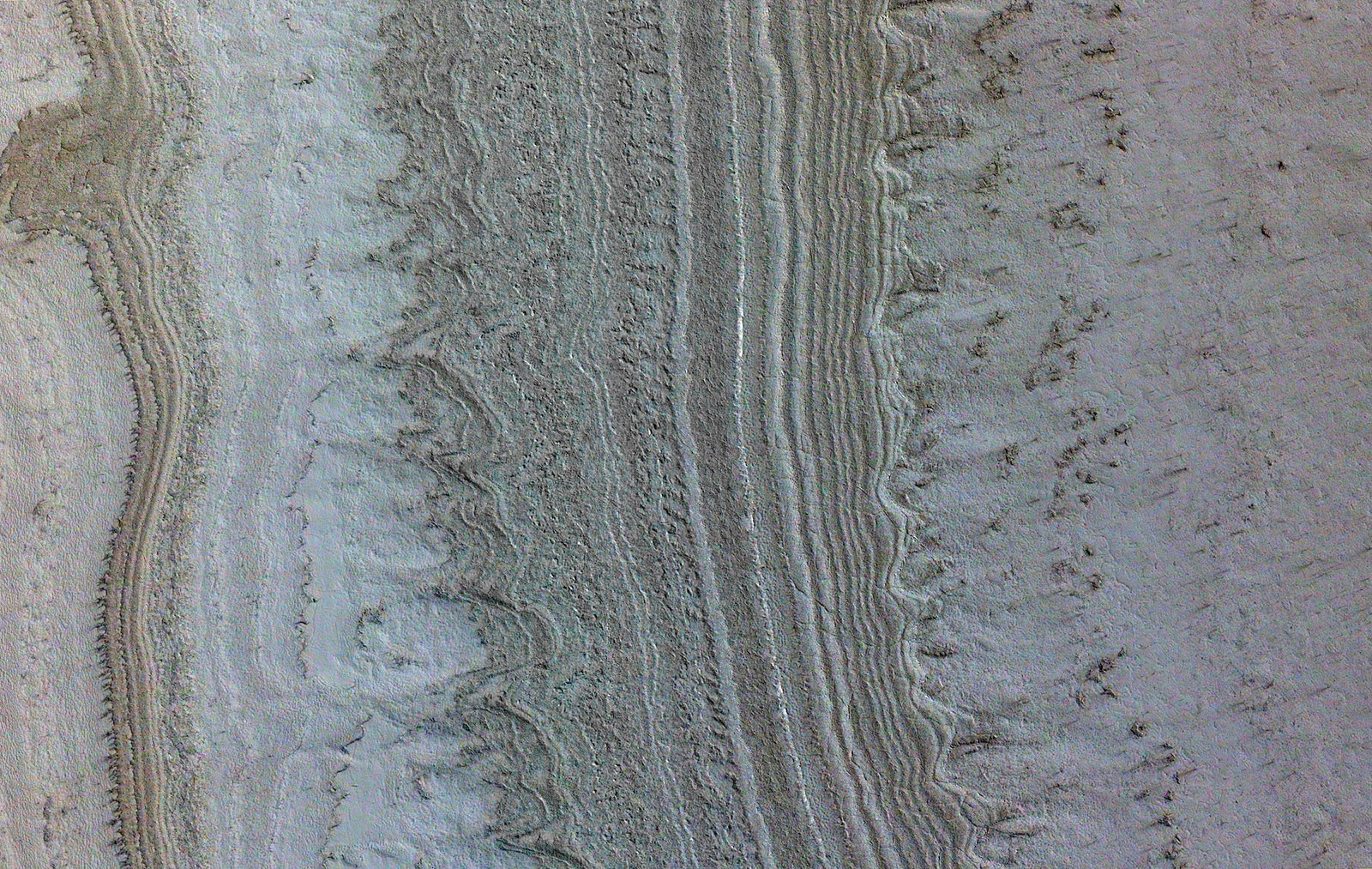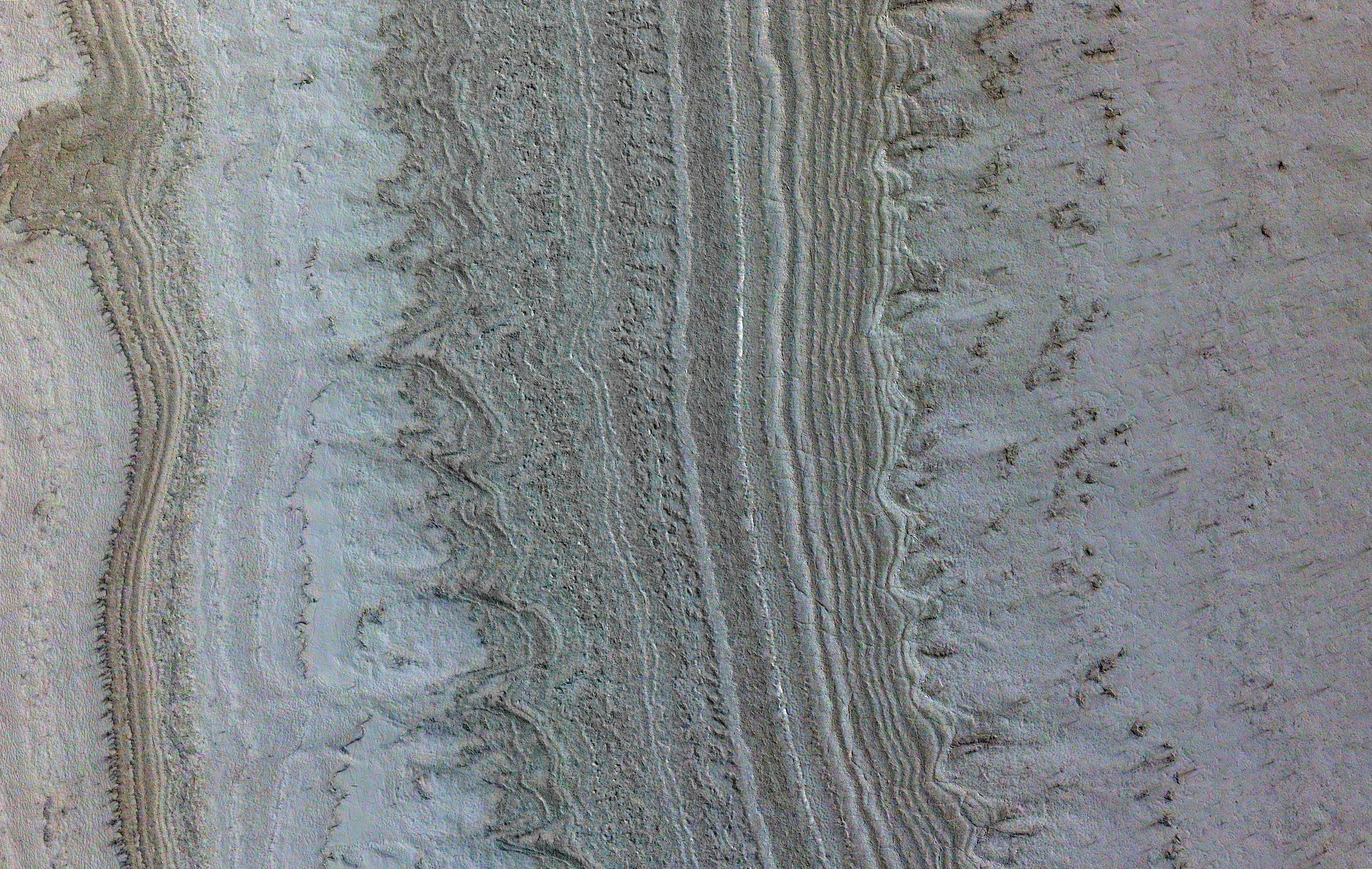MRO Spots Clays and Ice

| Credit | NASA/JPL-Caltech/University of Arizona/JHU |
|---|---|
| Language |
|
This image taken by NASA’s Mars Reconnaissance Orbiter (MRO) shows ice sheets at Mars’ south pole. The spacecraft detected clays near this ice; scientists have proposed such clays are the source of radar reflections that have been previously interpreted as liquid water using data from the ESA (European Space Agency) Mars Express orbiter.
Flying 186 miles (300 kilometers) above the Martian surface, MRO used its High-Resolution Imaging Science Experiment (HiRISE) camera to study the ice sheets while using its Compact Reconnaissance Imaging Spectrometer (CRISM) to map out clay minerals near the ice.
NASA's Jet Propulsion Laboratory, a division of Caltech in Pasadena, California, manages MRO for NASA's Science Mission Directorate in Washington. The University of Arizona, in Tucson, operates HiRISE, which was built by Ball Aerospace & Technologies Corp., in Boulder, Colorado. The Johns Hopkins University Applied Physics Laboratory in Laurel, Maryland, led the work to build the CRISM instrument and operates CRISM in coordination with an international team of researchers from universities, government and the private sector.

